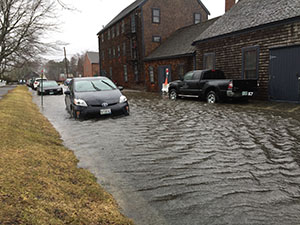Resiliency and Adaptation
Adapting to climatic changes to enable us to be more resilient.
 Our environment is no longer static and we are experiencing short- and long-term consequences due to climatic changes. We need to adapt our practices to enable us to be more resilient in response to these changes in our environmental conditions.
Our environment is no longer static and we are experiencing short- and long-term consequences due to climatic changes. We need to adapt our practices to enable us to be more resilient in response to these changes in our environmental conditions.
We are more resilient when we can recover from extreme weather events and design our recovery efforts to be more prepared for the next event and long-term changes. State agencies, municipalities and individuals are all responding to non-static environmental conditions, including short term extreme weather events and long term seasonal shifts.
Proactive planning and action are essential to ensure that coastal New Hampshire can mitigate and adapt to worsening coastal flood hazards, such as sea-level rise, coastal storms and extreme precipitation.
Through technical assistance and partnerships, the Coastal Program and the Air Resources Division assist state and local decision-makers with adaptation and resilience planning to minimize damage and increase preparedness and resilience.
Learn more about Coastal Hazards and Adaptation.
State Agencies
Partners
King Tides
King Tides are our highest tides of the year. When the moon, sun, and Earth align, in their monthly and yearly orbits, the gravitational pull creates exceptionally high tides. We like to capture these King Tides in photos as they help us understand areas prone to flooding and they give us a glimpse of what our future will look like as sea levels continue to rise.




